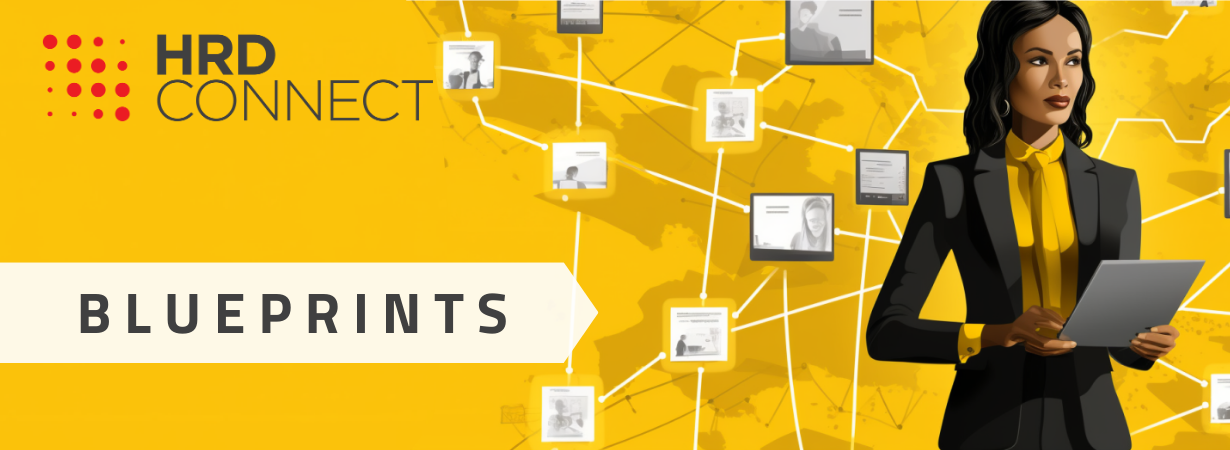Blueprint: How to address work allocation inefficiencies with people analytics
- 8 Min Read
This blueprint guides HR leaders through the process of using people analytics to improve how work is assigned within an organization. By following this detailed roadmap, you’ll be equipped to make data-driven decisions that will boost employee engagement and overall productivity.
- Author: HRD Connect
- Date published: Oct 25, 2023
- Categories

When work allocation is done poorly, the results often include wasted resources, disengaged employees, and ultimately, a loss of revenue. In large corporations, where teams, groups, and divisions are numerous and spread across multiple countries, the problem compounds. HR leaders who are navigating sprawling and constantly changing organizational structures must seek better ways to allocate work more effectively.
People analytics offers a powerful solution to this issue. By harnessing data, HR leaders can gain deep insights into how organizations allocate work, pinpoint inefficiencies, and identify opportunities for improvement. This blueprint aims to provide a step-by-step guide to successfully integrating people analytics into your work allocation processes.
Step 1: Work allocation assessment
Start by assessing the current work allocation landscape within your organization. This includes a granular review of how your organization assigns tasks, the performance metrics that are considered, and the existing technologies that facilitate this. The objective is to identify black spots where people analytics can offer better decision-making tools for work allocation; where decisions are currently being made without any data insight or evidence. Once the assessment is complete, define the specific objectives you aim to achieve through the integration of people analytics. This might range from increasing employee engagement to optimizing resource utilization or even improving delivery timelines.
Having established your objectives, it’s crucial to identify what resources—both human and technological—you need for successful implementation. People analytics is about equipping the right people with the right analytical skills to interpret the data. You’ll also need buy-in from senior leadership to secure the necessary resources and to ensure alignment with broader business objectives.
Finally, develop a robust project plan that outlines the steps required for integration, from the initial data collection phase to the ultimate monitoring and evaluation. This should include timeframes, key milestones, and the criteria by which you will measure the project’s success.
- Why it matters: Initial planning sets the trajectory for the entire integration process.
- How to execute: Conduct a thorough internal audit of current practices, followed by a SWOT analysis. Identify specific objectives and then move on to resource allocation, securing the necessary technology and skill sets.
- Who to engage: Involve HR analytics experts, senior leadership for executive buy-in, operations managers for process insights, and IT professionals for technology assessments.
- Tools and resources: Utilize advanced project management software for planning and tracking and data visualization tools for initial assessment and ongoing monitoring.
Step 2: Data collection and analysis
Organizations often suffer from data silos where crucial information is spread across disparate systems like Human Resource Information Systems (HRIS), performance management systems, and even ad-hoc employee surveys. Consolidating this data into a unified framework is a non-negotiable first step for an analytics-based approach to work allocation.
In this phase, the primary focus should be on identifying relevant data sources and ensuring the quality of data being collected. Start by pulling data from established platforms like your HRIS, performance management systems, or even project management tools. Data validation is a parallel stream, where you cleanse and format your collected data to ensure it is both accurate and reliable for analysis.
Once the data is in place, the analytics team should engage in robust statistical analysis to draw actionable insights. Employ techniques like regression analysis, machine learning algorithms, or even simpler methods like descriptive statistics to identify patterns, trends, and correlations. This analytical strategy should culminate in a gap analysis that identifies the delta between current practices and optimal work allocation strategies informed by data.
- Why it matters: Data integrity is the cornerstone of reliable analytics. Accurate, robust data analysis can illuminate hidden inefficiencies and provide actionable insights to re-engineer work allocation processes.
- How to execute: Centralize your data collection by aggregating information from multiple sources. Employ data validation techniques to ensure accuracy and completeness. Perform sophisticated data analytics to extract actionable insights.
- Who to engage: Data scientists for analytics, IT for data collection and validation, and operations managers for understanding context and practical implications.
- Tools and resources: Leverage data integration platforms for the collection, employ statistical software for analysis, and use data visualization tools to make the data digestible for decision-makers.
Step 3: Establishing metrics and KPIs
After the data analysis phase, the emphasis shifts towards quantifying performance and setting measurable standards. Key metrics and Key Performance Indicators (KPIs) provide this standardization. These metrics should align explicitly with the organizational goals, as well as the specific objectives set out for improving work allocation processes.
In crafting these metrics, consider both leading and lagging indicators that can provide a balanced perspective. Utilize a dashboard or reporting system that is both dynamic and real-time, allowing for the agile monitoring of key metrics. These metrics must be well-defined and benchmarked against industry standards or competitors. This enables not just internal improvement but positions the organization favorably in the marketplace.
- Why it matters: Metrics and KPIs provide a standardized measurement system that enables continuous improvement and benchmarking against industry standards.
- How to execute: Define metrics that resonate with the objectives of integrating people analytics into work allocation. Develop a reporting system to track these metrics in real time.
- Who to engage: Involve analytics teams to define KPIs, IT for dashboard development and leadership for aligning metrics with organizational goals.
- Tools and resources: Utilize business intelligence tools for dashboard creation, data analytics platforms for real-time monitoring, and industry reports for benchmarking.
Step 4: Implementing changes and interventions
Transform the data’s story into actionable changes and interventions aimed at optimizing work allocation processes. Beyond the numbers and algorithms, this stage involves significant human elements, including communication, change management, and training.
Start by revisiting your work allocation processes and consider modifications or entirely new practices informed by your analytics. Communicate these changes transparently to all stakeholders, ensuring you have their buy-in for a smoother transition. Roll out training programs, aimed not just at enlightening employees on the new practices but also equipping them with the necessary skills to utilize the analytics tools at their disposal. Be vigilant during the implementation phase; capture early feedback and make adjustments accordingly.
- Why it matters: The implementation phase is the crucible where analytics are tested against real-world dynamics, impacting work allocation directly.
- How to execute: Develop a comprehensive change management plan and establish communication channels for informing and training staff. Roll out changes in a phased manner.
- Who to engage: Engage middle management who will enact these changes, as well as team members. Additionally, coordinate with the IT department for any technical rollouts.
- Tools and resources: Utilize change management software to track the process, internal communication platforms for announcements, and e-learning systems for staff training.
Step 5: Continuous monitoring and evaluation
Optimization is ongoing. One of the pitfalls organizations fall into is considering the analytics integration process complete upon initial implementation. This assumption can derail the entire initiative. Continual monitoring and evaluation ensure the sustainability and scalability of your data-driven interventions.
To gauge the impact, frequently review the metrics and KPIs established earlier. Check for any deviations from expected outcomes and identify areas requiring adjustments. Evaluate the effectiveness of your new work allocation processes regularly, using a blend of quantitative and qualitative measures. Additionally, feedback loops with employees and managers offer invaluable firsthand insights into how well the new processes are working, or not.
- Why it matters: Continual monitoring maintains the relevancy and effectiveness of your analytics-driven strategies, ensuring they adapt to changing organizational dynamics.
- How to execute: Employ regular audits of work allocation data, employee surveys, and one-on-one interviews to gather a composite picture of ongoing performance.
- Who to engage: This involves everyone from top-level management to ground-level employees. Your IT and analytics teams will also play a significant role in data gathering and interpretation.
- Tools and resources: Advanced analytics dashboards for real-time monitoring, employee feedback tools, and periodic review meetings with cross-functional teams can prove invaluable.
Work allocation and people analytics: Future focus
The realm of people analytics is always advancing, with new tools and methods for capturing and interpreting data becoming available. These advancements can offer greater accuracy and insights, and organizations should be prepared to update or switch their tools to stay at the cutting edge.
As people analytics progresses in popularity, remember the importance of data literacy. The greatest analytics tool is futile if its insights remain confined to a small group of data scientists. Work toward making analytics everyone’s business. Training programs and workshops can assist in making your workforce more data-literate, driving greater engagement and more effective decision-making across the board.
Lastly, never lose sight of the human element. Remember that while data can guide you, the ultimate objective is the well-being and productivity of your people. Continue to align your people analytics strategy with broader organizational values and objectives to ensure a human-centric approach to work allocation.









